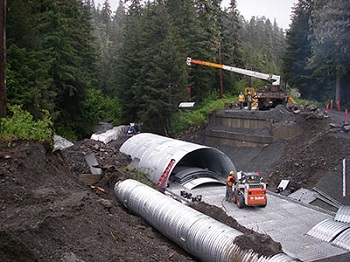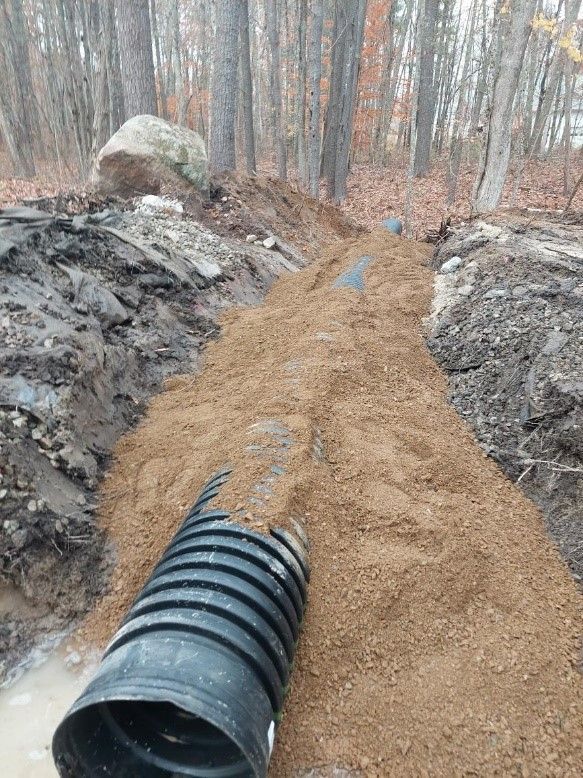Effective Underbrush Clearing for Clean and Safe Land
Effective Underbrush Clearing for Clean and Safe Land
Blog Article
Culvert Installation Made Easy: Step-by-Step Guide for Success
From selecting the appropriate culvert dimension to incorporating appropriate drainage measures, each action in the setup procedure plays an important function in the performance and long life of the culvert system. Remain tuned to reveal the necessary steps and factors to consider that can make culvert installation a smooth and successful undertaking.
Picking the Right Culvert Size
Picking the ideal culvert dimension is critical for making sure efficient water flow and architectural honesty in culvert installment projects - Pad Construction. The size of the culvert directly influences the circulation capability of water through the framework. A culvert that is also tiny can lead to flooding and overflow, while one that is as well large might result in decreased water rate, potentially causing sediment accumulation and clogs
To figure out the appropriate culvert size, elements such as the watershed location, peak circulation rates, and hydraulic performance demand to be meticulously thought about. Computations based upon these criteria aid in selecting a size that can sufficiently handle the predicted water quantity while minimizing the threat of blockages and structural failing.
It is vital to consult engineering guidelines and standards to guarantee that the selected culvert dimension meets the task demands and neighborhood policies (Pad Construction). By picking the best culvert size, job managers can optimize water flow, avoid prospective concerns, and enhance the general performance and durability of the culvert installment
Preparing the Setup Website
Effective culvert installation necessitates thorough prep work of the installment site to make sure optimum structural assistance and functionality. Prior to commencing the setup process, it is vital to get rid of the site of any type of debris, plants, or blockages that could restrain the culvert's placement. Ensuring a level structure is necessary for the appropriate positioning and stability of the culvert. This might include grading the site to produce a smooth, also surface area that can adequately sustain the weight of the culvert and any type of expected tons. In addition, proper compaction of the soil beneath the culvert is needed to stop resolving or shifting with time.
In addition, it is very important to think about factors such as soil composition, groundwater degrees, and ecological influences when preparing the installment site. Performing a detailed site analysis can aid identify any kind of potential difficulties or threats that might influence the culvert's efficiency. By putting in the time to prepare the installment site appropriately, you can help assure an effective culvert installment that satisfies structural needs and makes sure long-term functionality.
Putting the Culvert Correctly

The grade at which the culvert is placed is over here vital for keeping a correct slope for water circulation. Additionally, the culvert ought to be oriented correctly to make sure that the inlet check out this site and electrical outlet are in the proper areas. Pad Construction.
Backfilling and Condensing the Soil
Correct backfilling and compaction of the soil around the culvert is crucial to guarantee security and avoid potential problems in the future. When the culvert is appropriately placed, the following critical step is to backfill the area around it with suitable product. The backfill material need to be devoid of rocks, debris, and natural matter to stay clear of damages to the culvert. It is advised to make use of granular material such as sand or gravel for backfilling, as it gives great drainage and compaction buildings.
After placing the backfill material, it is vital to portable it in layers of consistent density. Utilizing a compactor or a mechanical meddle, compact the dirt carefully to avoid damaging the culvert. Compaction assists in reducing the chances of negotiation and makes sure consistent support around the culvert. It is crucial to small the dirt uniformly on all sides of the culvert to maintain its architectural stability.
Correct backfilling and compaction not just offer stability to the culvert but also help in preventing soil disintegration and keeping the durability of the culvert system.
Guaranteeing Proper Drainage Combination
Incorporating effective drain remedies plays a vital function in the total capability and durability of culvert setups. Proper water drainage combination is crucial for taking care of water circulation, protecting against disintegration, and guaranteeing the structural honesty of the culvert system. To achieve this, it is vital to design a detailed water drainage plan that takes into consideration factors such as the volume of water anticipated, the topography of the area, and the kind of dirt his comment is here existing.

Additionally, incorporating attributes like erosion control procedures, such as riprap or plant life, can further boost the effectiveness of the drain system. By very carefully intending and executing these water drainage options, culvert setups can function effectively and withstand the examination of time.
Conclusion
In verdict, appropriate culvert installment is essential for maintaining reliable drainage systems. By choosing the ideal culvert size, preparing the installment site, positioning the culvert correctly, backfilling and compacting the dirt, and making certain proper water drainage combination, success can be achieved. Adhering to these actions will certainly help make certain the long life and performance of the culvert, eventually adding to the general success of the drain system.
Report this page